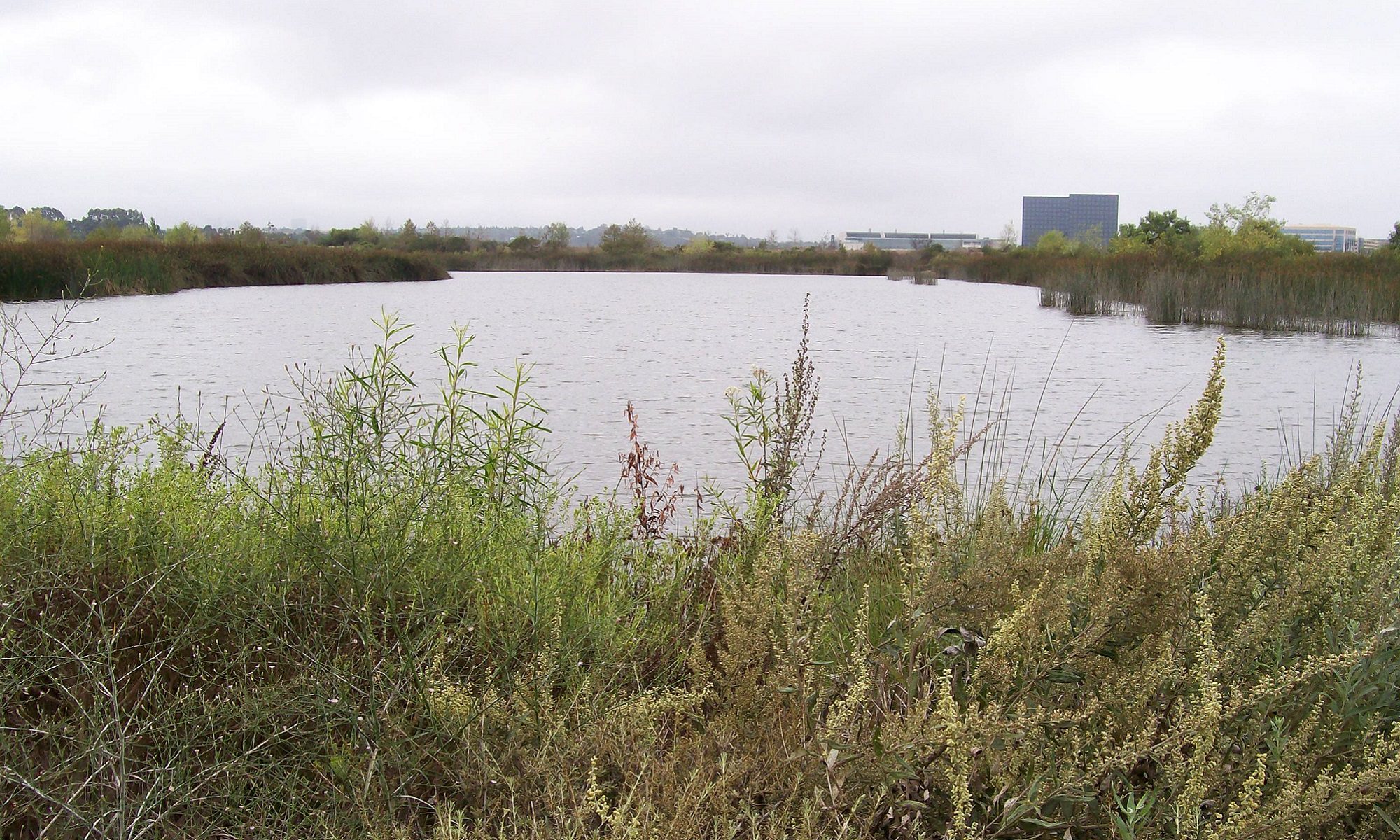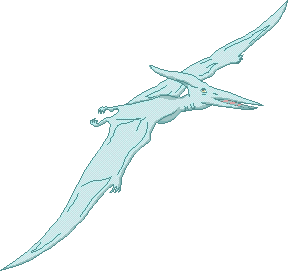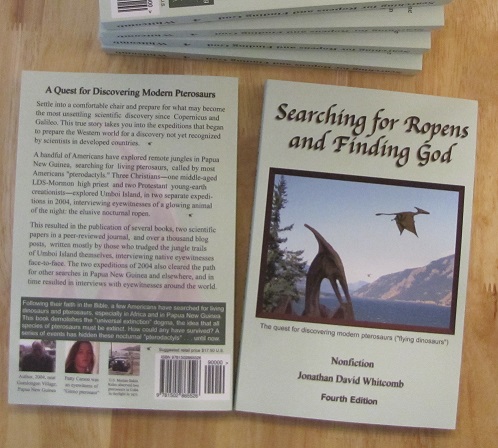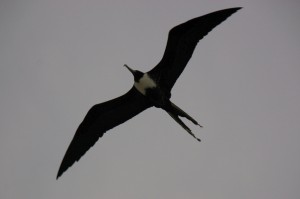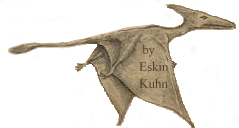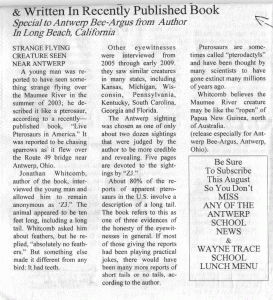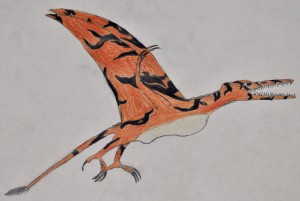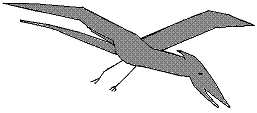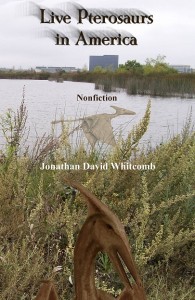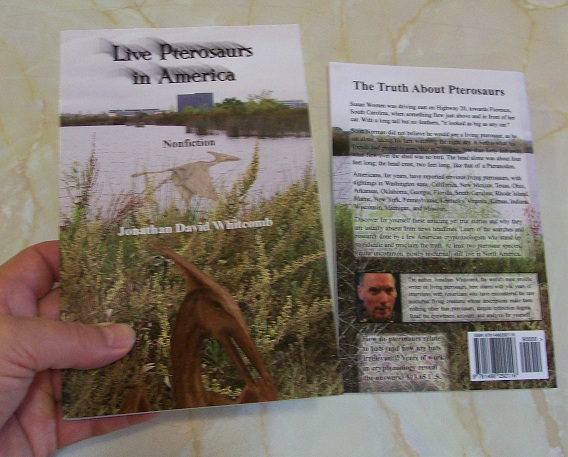Readers of a recent post by Dr. Donald Prothero may think that I, Jonathan Whitcomb, have single-handedly deceived ignorant people into believing that pterosaurs are still alive. The paleontologist seems upset that my web pages dominate Google searches (and they used to dominate, years ago, on words like ropen.) Let’s look deeper.
Why use the Words “Apparent Pterosaur?”
Google “apparent pterosaur” (within quotes) and all nine non-image pages on the first Google-page are my publications, at least on November 28, 2014. What other search terms result in such a domination by my writings? My postings do not even come close to that dominance with the following terms used:
- ropen
- pterosaur
- pterodactyl
In fact, today the word ropen brings up “Don’t Get Strung Along by the Ropen Myth,” on the top non-image first-page position, and that article is extremely critical of living-pterosaur ideas. In addition, pterodactyl did not bring up even one of my posts on the first-page listing on Google.
So why do my blog posts and other web pages dominate when googling apparent pterosaur within quotation marks? I often use those words when referring to an eyewitness report of a flying creature. In other words, I try to be objective and allow for the possibility that a particular encounter was not from observing a living pterosaur.
Bulverism in a post by Prothero
A major problem with Dr. Prothero’s post is in the idea that I, Jonathan Whitcomb, have used deception in promoting my ideas, thus flooding the internet with my supposed error in believing in modern pterosaurs. I will not link to “Fake Pterosaurs and Sock Puppets,” but it’s easily found. In reality, I used two pen names, in a minority of my writings, to allow readers to learn about eyewitness sightings without becoming distracted by my common name, which had been used in ridicule years earlier. I used those two pen names because of earlier false accusations about dishonesty; I did not use them to deceive.
Sock puppetry accusations pull readers’ attention away from the point, which is eyewitness testimony. Prothero has fallen into bulverism, but in a more pernicious form than the one described by C. S. Lewis decades ago.
Men of action, who search remote jungles for modern pterosaurs but who return home admitting they saw no clear pterosaur—they do not lie about their failures. They do, however, tell the truth about what natives tell them. Men who go nowhere to look for any living thing—they may be least qualified to accuse men of action of deceiving.
Objective Investigation of Reports of Living Pterosaurs
Getting back to the words apparent pterosaur, an individual eyewitness of one sighting of a flying creature can be mistaken in thinking a bird or bat or unknown non-pterodactyl was a pterosaur. Dr. Prothero and I agree on that. But that paleontologist appears to be completely ignorant of the overall sighting report details, in particular the similarities that cross cultural boundaries and cross religious differences.
Long tails on featherless flying creatures dominate reports from around the world, even in Western countries where short-tailed Pterodactyloid pterosaurs dominate in fictional television and in films. I have found practically no difference between American sighting reports and in the reports from third-world countries where cultures and traditions are greatly different.
Common kind of image seen by Americans in fiction (no long tail)
.
Compare the above with the sketch by Eskin Kuhn:
 This is much more like what both Americans and jungle natives actually see
This is much more like what both Americans and jungle natives actually see
.
If a cryptozoologist becomes over-exuberant in trying to persuade the Western world that one or more species of pterosaur is alive, and loses all sense of objectiveness, would that radical person use the phrase “apparent pterosaur” so often that his pages would dominate when a Google search were done with it? Of course not. The point is that I am honestly trying to know and understand the truth about these sightings. I am trying to be objective.
I hope that many readers will come to understand that I have not spent over 10,000 hours, in the past eleven years, on a personal project to deceive people. This is not actually about me, however; it’s coming to that understanding so people can awaken to listen to the eyewitnesses with an open mind. The overall report-details make the case.
.
###
.
A different kind of attack has been launched, as an American paleontologist has dismissed the ropen as a “fake” pterosaur and dismissed me, Jonathan Whitcomb, as one who practices deception.
.
Whitcomb interviewed on Monster-X Radio
“Maybe, Shane, I should go a little bit into some of the ideas that have been floating around and thrown out by skeptics . . . One of them is about, well, people are just misidentifying flying foxes. That’s one of the oldest: I heard of that way back in 2004; I think that was already an old idea. But this is one of the examples: You see, these seven boys were terrified at this creature that was not a flying fox because they would not have been scared of it. . . .”
Hodgkinson continues to give a powerful testimony of his 1944 encounter with a huge flying creature that is an obvious live pterosaur, notwithstanding the Western dogma about universal extinction.
When someone publishes a web site with a URL that includes the words “stupid” and “lies,” and the point of the site is to ridicule those who promote the idea of living dinosaurs or living pterosaurs, “bulverism” probably fits . . .
.
The quest for discovering modern pterosaurs – nonfiction book
Searching for Ropens and Finding God – fourth edition
.
